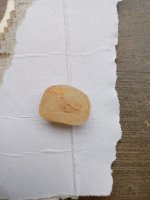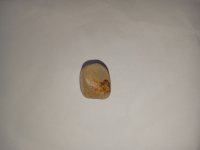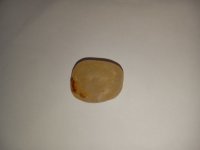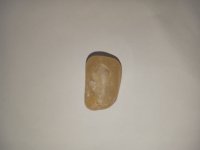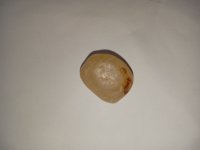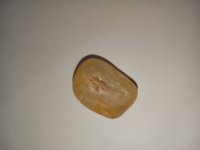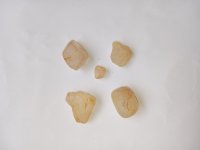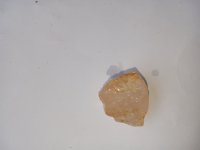It is translucent and looks like natural tumbled topaz. Any idea?
Navigation
Install the app
How to install the app on iOS
Follow along with the video below to see how to install our site as a web app on your home screen.
Note: This feature may not be available in some browsers.
More options
You are using an out of date browser. It may not display this or other websites correctly.
You should upgrade or use an alternative browser.
You should upgrade or use an alternative browser.
🔎 UNIDENTIFIED Natural tumbled topaz???
- Thread starter Fodegrass
- Start date
From what I see, it looks like a light-colored chalcedony. Here’s a photo for comparison. Possibly even beach-worn crystal. In what general area was it found?

Upvote
0
- Thread starter
- #6
I found it in the Declan plateau of South india (tamilnadu state).From what I see, it looks like a light-colored chalcedony. Here’s a photo for comparison. Possibly even beach-worn crystal. In what general area was it found?View attachment 2161311
Upvote
1
Red-Coat
Gold Member
How is this solved?
There is no single definitive test without resorting to sophisticated equipment, but I would recommend investing in a UV flashlight which will be useful for other purposes too. I bought one a while ago for the US equivalent of about $20. They usually operate in the short wave UVA band (~365nm), which is more useful than the long wave band (~395nm).
Topaz will fluoresce a golden yellow colour under short wave UV (and a pale creamy yellow under long wave UV).
You could also try a scratch test. Topaz is very hard. At least 8 on the Mohs scale versus quartz at around 7 to 7.5.
The crystal structure means it takes a very high polish. If your specimen has been extensively tumbled, it may have a slippery or soapy feel (quartz will not).
Topaz exhibits ‘pleochroism’. With strong ordinary lighting it shows different colours or depths of colour when viewed from different angles (yellow, reddish, pink, violet or bluish). It may not be very pronounced in thick specimens.
There is no single definitive test without resorting to sophisticated equipment, but I would recommend investing in a UV flashlight which will be useful for other purposes too. I bought one a while ago for the US equivalent of about $20. They usually operate in the short wave UVA band (~365nm), which is more useful than the long wave band (~395nm).
Topaz will fluoresce a golden yellow colour under short wave UV (and a pale creamy yellow under long wave UV).
You could also try a scratch test. Topaz is very hard. At least 8 on the Mohs scale versus quartz at around 7 to 7.5.
The crystal structure means it takes a very high polish. If your specimen has been extensively tumbled, it may have a slippery or soapy feel (quartz will not).
Topaz exhibits ‘pleochroism’. With strong ordinary lighting it shows different colours or depths of colour when viewed from different angles (yellow, reddish, pink, violet or bluish). It may not be very pronounced in thick specimens.
Upvote
1
- Thread starter
- #8
Yeah. It is not topaz, somehow by mistake I pressed the solved check box.How is this solved?
There is no single definitive test without resorting to sophisticated equipment, but I would recommend investing in a UV flashlight which will be useful for other purposes too. I bought one a while ago for the US equivalent of about $20. They usually operate in the short wave UVA band (~365nm), which is more useful than the long wave band (~395nm).
Topaz will fluoresce a golden yellow colour under short wave UV (and a pale creamy yellow under long wave UV).
You could also try a scratch test. Topaz is very hard. At least 8 on the Mohs scale versus quartz at around 7 to 7.5.
The crystal structure means it takes a very high polish. If your specimen has been extensively tumbled, it may have a slippery or soapy feel (quartz will not).
Topaz exhibits ‘pleochroism’. With strong ordinary lighting it shows different colours or depths of colour when viewed from different angles (yellow, reddish, pink, violet or bluish). It may not be very pronounced in thick specimens.
But it seems like it is chalcedony as said by Blackfoot58 since his prediction matches since I found it in Deccan plateau of south india
Upvote
2
- Jul 27, 2006
- 49,129
- 56,715
- Detector(s) used
- Minelab_Equinox_ 800 Minelab_CTX-3030 Minelab_Excal_1000 Minelab_Sovereign_GT Minelab_Safari Minelab_ETrac Whites_Beach_Hunter_ID Fisher_1235_X
- Primary Interest:
- All Treasure Hunting
I removed the solved for you....
Upvote
1
Top Member Reactions
-
 3526
3526 -
 2034
2034 -
 1748
1748 -
 1459
1459 -
 1213
1213 -
 1191
1191 -
 1063
1063 -
 951
951 -
 856
856 -
 746
746 -
 639
639 -
 596
596 -
 487
487 -
 478
478 -
 471
471 -
E
442
-
 401
401 -
 392
392 -
 379
379 -
 332
332
Users who are viewing this thread
Total: 2 (members: 0, guests: 2)


